Introduction
Modern digital learning systems leverage real time analytics, adaptive interfaces, and AI-driven personalization. However, to objectively measure instructional effectiveness, A/B testing offers a controlled experimentation framework that supports quantitative evaluation of teaching methods, content formats, and user interactions. Unlike observational analysis, A/B testing introduces deliberate variation and controlled exposure to alternate pedagogical treatments under statistically validated conditions.
System Architecture Overview
A digital A/B testing system for pedagogy comprises five core layers:
Experiment Assignment Layer
- Randomization Engine: Implements uniform or stratified random sampling.
- Assignment Algorithms: Uses hash based persistent identifiers or session based tokens.
- Balancing Mechanisms: Ensures statistical parity across control and treatment groups based on covariates (e.g., prior scores, age, device).
Content Delivery Layer
- Variant Rendering Engine: Built on client side technologies (e.g., React, Vue.js) for real time delivery of UI/UX or instructional variants.
- SCORM/xAPI Compliance: Enables fine grained learning object tracking and interoperability.
- Content Versioning System: Tracks revisions and ensures version control integrity.
Telemetry & Logging Layer
- Event Logging Pipelines: Powered by platforms like Apache Kafka or AWS Kinesis.
- User Interaction Tracking: Captures clickstream, hover states, dwell time, and form interactions.
- Learning Activity Logs: xAPI statements stored in Learning Record Stores (LRS) such as Learning Locker.
Analytics & Evaluation Layer
- Statistical Inference Module:
- Frequentist Testing: T-tests, ANOVA, Chi-squared for categorical outcome comparison.
- Bayesian Models: Posterior estimation for probabilistic treatment effect assessment.
- Causal Inference Models:
- Propensity score matching
- Uplift modeling (differential response modeling)
- A/B Dashboard Engines: Custom dashboards with D3.js or Tableau for real time experiment analytics.
Feedback & Recommendation Engine
- Auto-Adaptive Switching: Implements Multi Armed Bandit algorithms to progressively allocate traffic to better performing variants.
- Instructional Design Loop: Integrates performance data into content iteration and refinement workflows.
Experimental Design Methodology
Hypothesis Definition
Each experiment begins with a formal hypothesis. Example: H0: “There is no significant difference in post-test scores between learners who receive interactive video and those who receive static slides.”
Unit of Analysis
- User-Level Testing: Most common in e-learning platforms.
- Session-Based Testing: Isolates effects when learners can interact across multiple devices.
- Module-Level Testing: Evaluates pedagogical redesigns within individual learning units.
Randomization Techniques
- Simple Random Assignment: Uses a pseudo-random number generator seeded by user ID hash.
- Blocked Randomization: Ensures equal group sizes across stratified variables.
- Matched Pair Design: Pairs similar users before assigning to treatments for lower variance.
Sample Size Estimation
Uses power analysis to determine:
- Minimum Detectable Effect (MDE)
- Significance Level (α): Typically 0.05
- Statistical Power (1–β): Typically ≥ 0.8 Software tools: G*Power, Python’s statsmodels or R’s pwr package.
Data Processing Pipeline
- Data Ingestion
- JSON event streams → Apache Kafka → NoSQL (MongoDB) or SQL warehouse (PostgreSQL/BigQuery)
- Preprocessing
- ETL workflows using Apache Spark or Airflow
- Timestamp normalization, user session stitching
- Feature Engineering
- Behavioral features: time-on-task, activity entropy
- Performance metrics: quiz scores, hint usage, retry counts
- Modeling & Analysis
- Scikit-learn, PyMC3, or TensorFlow Probability for inferential and predictive models
- Bootstrap resampling for CI estimation
- False discovery rate control using Benjamini–Hochberg for multiple testing
Real-World Implementation Example
Use Case: Evaluate effectiveness of interactive drag-and-drop quizzes vs. traditional MCQs.
| Variant | Average Completion Time | Post-Assessment Score | Engagement Rate |
|---|---|---|---|
| A (MCQs) | 4.5 mins | 78.3% | 63% |
| B (Drag-and-Drop) | 5.7 mins | 84.6% | 76% |
- P-value (Two-tailed T-test): 0.014
- Cohen’s d: 0.52 (Moderate effect size)
Conclusion: Variant B led to significantly higher comprehension at a tradeoff of marginally higher completion time.
Challenges and Mitigation Strategies
| Challenge | Mitigation |
|---|---|
| Sample bias | Use stratified sampling; apply covariate balancing |
| Interference between treatments | Avoid crossover; use between-subject design |
| Delayed learning effects | Conduct longitudinal follow-up testing |
| Ethical considerations | Ensure informed consent and data anonymization |
Conclusion
A/B testing provides a scalable, statistically sound methodology for continuous improvement in digital pedagogy. By embedding experimental design principles into e-learning systems, educational institutions can optimize learning experiences based on empirical outcomes. As AI-driven personalization expands, the role of A/B testing will further evolve toward contextual, adaptive, and automated instructional optimization.



